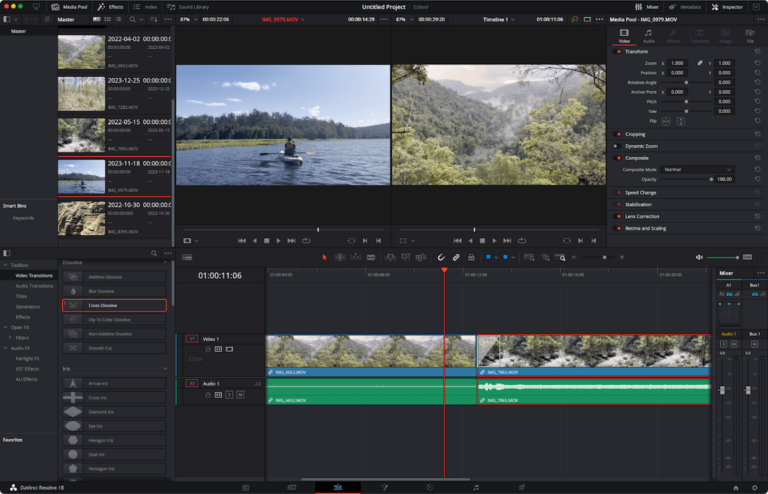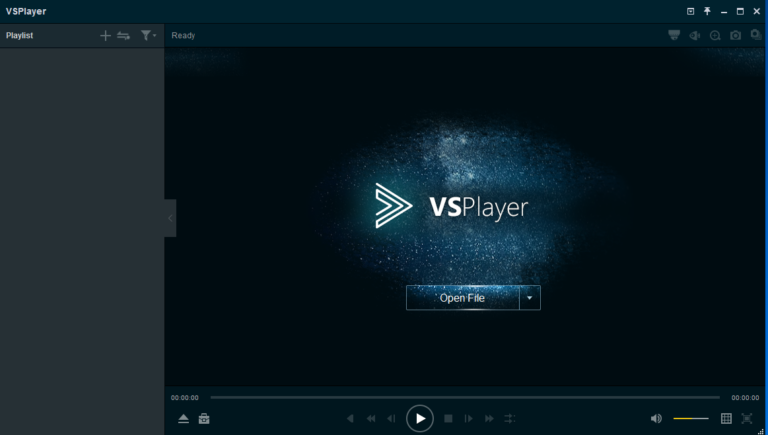The best educational software for PC includes Khan Academy, Duolingo, and Microsoft OneNote. These tools offer diverse learning experiences.
Khan Academy provides free courses on various subjects, making learning accessible to all. Duolingo is perfect for mastering new languages with its interactive lessons. Microsoft OneNote helps students organize notes and collaborate on projects efficiently. Each software enhances different learning aspects, catering to various educational needs.
These tools are user-friendly and support a wide range of educational goals. Whether you want to improve your math skills, learn a new language, or keep your notes organized, these educational software options are among the best for PC users.
Introduction To Educational Software
Educational software for PC has revolutionized learning. It makes education interactive and fun. It caters to different learning styles. Students can now learn at their own pace. Software covers subjects like math, science, and languages. It also includes games, quizzes, and tutorials. Learning has never been more exciting.
Benefits For Diverse Learners
Educational software benefits all learners. It helps visual, auditory, and kinesthetic learners. Visual learners enjoy graphics and videos. Auditory learners benefit from audio instructions. Kinesthetic learners engage with interactive tasks.
Special needs students find these tools very helpful. They get personalized learning experiences. The software adapts to their pace and needs. This builds confidence and independence.
Advancements In Learning Technology
Learning technology has advanced greatly. Artificial Intelligence (AI) personalizes learning paths. AI analyzes student performance. It provides tailored content to improve skills.
Virtual Reality (VR) makes learning immersive. Students explore historical events and scientific phenomena. VR brings textbooks to life.
Gamification motivates students. It turns learning into a game. Students earn points and badges for achievements. This keeps them engaged and eager to learn.
| Technology | Benefit |
|---|---|
| Artificial Intelligence (AI) | Personalized learning paths |
| Virtual Reality (VR) | Immersive experiences |
| Gamification | Increased motivation |
Criteria For Top-notch Educational Software
Choosing the best educational software for PC is essential. Excellent software can make learning fun and effective. But what makes software top-notch? Several factors come into play. Let’s explore the key criteria.
Interactive Elements
Top educational software must have interactive elements. These elements keep learners engaged. Students learn better when they actively participate. Interactivity includes:
- Quizzes and tests
- Games and puzzles
- Drag-and-drop activities
- Interactive videos
These elements make learning enjoyable. They also help in better retention of information.
Customizable Learning Paths
Another key feature is customizable learning paths. Not every student learns at the same pace. Customizable paths allow students to learn at their own speed. This ensures everyone gets the most out of the software.
Customizable learning paths include:
- Adjustable difficulty levels
- Personalized lesson plans
- Self-paced learning modules
- Trackable progress reports
These features ensure that the software caters to individual needs. It helps in creating a personalized learning experience.
Age-specific Educational Software
Educational software is tailored for different age groups. This ensures that learning is effective and engaging. Let’s explore the best options for young learners, teenagers, and adults.
Tools For Young Learners
Young learners need fun and interactive tools to stay engaged. Educational software for kids often includes games and colorful visuals.
- ABCmouse: This tool offers a full online curriculum for ages 2-8. Kids can explore reading, math, science, and art.
- Khan Academy Kids: Free, educational program that includes thousands of interactive activities for children.
- ScratchJr: An introductory programming language for kids ages 5-7. They learn to create interactive stories and games.
Software For Teenagers
Teenagers need more advanced tools for their learning. The software should challenge their critical thinking and problem-solving skills.
- Duolingo: This language-learning app is great for teens wanting to learn new languages.
- Codecademy: Provides interactive coding lessons in various programming languages.
- Wolfram Alpha: A powerful computational engine ideal for solving math and science problems.
Adult Education And Lifelong Learning Platforms
Adults often seek to learn new skills or improve existing ones. Lifelong learning platforms cater to this need.
| Platform | Focus Area |
|---|---|
| Coursera | Offers courses from top universities in various subjects. |
| Udemy | Provides a wide range of courses including business, tech, and personal development. |
| LinkedIn Learning | Offers professional courses to enhance career skills. |
Subject-specific Software Breakdown
Educational software for PCs has made learning more engaging and effective. This section breaks down the best subject-specific software available. Each category focuses on different educational needs and interests.
Stem-focused Programs
STEM programs cover science, technology, engineering, and math. These subjects are crucial in today’s tech-driven world. Below are some top choices:
- Scratch: A visual programming language designed for kids. It teaches coding basics.
- GeoGebra: A math program that covers geometry, algebra, and calculus.
- CodeCombat: A game that teaches Python and JavaScript through interactive play.
Language Learning Applications
Language learning apps make mastering new languages simple and fun. These programs cater to different age groups and proficiency levels. Check out the following options:
- Rosetta Stone: Offers immersive language learning experiences.
- Duolingo: A popular, gamified app for various languages.
- Babbel: Focuses on conversation skills for real-life usage.
Software For The Arts And Humanities
Arts and humanities software enhances creativity and understanding of cultural subjects. These tools are perfect for budding artists and historians. Consider these programs:
- Adobe Creative Cloud: A suite of tools for graphic design, video editing, and more.
- MuseScore: A free notation software for creating and sharing sheet music.
- Google Arts & Culture: Offers virtual museum tours and educational resources.
Innovative Features In Educational Software
Educational software has transformed learning. It offers new and exciting ways to engage students. Let’s explore some innovative features found in the best educational software for PC.
AI and Adaptive LearningArtificial Intelligence, or AI, personalizes the learning experience. It adapts to each student’s needs. This means no two students get the same lesson plan. The software analyzes a student’s strengths and weaknesses. Then, it adjusts the content accordingly.
Some benefits of AI in education include:
- Personalized learning paths
- Real-time feedback
- Automated grading
AI-powered tools help students learn at their own pace.
Gamification for EngagementGamification makes learning fun. It uses game elements in non-game settings. This includes points, badges, and leaderboards. These features motivate students to engage more.
Key benefits of gamification:
- Increased motivation
- Enhanced participation
- Better retention of information
Games make learning interactive and enjoyable.
Virtual and Augmented RealityVirtual Reality (VR) and Augmented Reality (AR) bring lessons to life. VR creates immersive experiences. AR overlays digital elements in the real world. Both technologies make abstract concepts tangible.
Benefits of VR and AR in education:
- Enhanced visualization
- Experiential learning
- Interactive simulations
These tools make difficult topics easier to understand. Students can explore environments they wouldn’t otherwise experience.
Accessibility And Inclusivity In Software Design
Accessibility and inclusivity in educational software are crucial. They ensure that all students can learn effectively. This includes those with special needs and those who speak different languages. The design must cater to diverse user needs.
Support For Special Needs
Many educational software programs offer features for students with special needs. These features make learning easier and more enjoyable. For example:
- Text-to-speech functionality for visually impaired students.
- Adjustable font sizes for better readability.
- Interactive elements for students with attention deficits.
These tools help students learn at their own pace. They also ensure that no child is left behind.
Multilingual Support
Educational software with multilingual support is essential. It helps students who speak different languages. Key features include:
- Language selection options.
- Real-time translation of text and audio.
- Multilingual tutorials and help sections.
These features break down language barriers. They make learning accessible for everyone.
User Experience And Interface Design
The best educational software for PC must have an intuitive design. A great user experience ensures that both children and adults can easily navigate the software. Interface design plays a crucial role in making learning engaging and accessible.
Ease Of Use
Ease of use is key for any educational software. It should be simple to understand and operate.
- Clear, concise menus
- Easy-to-find features
- Simple, intuitive navigation
These features help users focus on learning instead of struggling with the software. A well-designed interface should not require a manual.
Cross-platform Compatibility
Cross-platform compatibility ensures that the software works on different devices. This means it can run on Windows, Mac, and sometimes even Linux.
| Platform | Compatibility |
|---|---|
| Windows | High |
| Mac | Medium |
| Linux | Low |
By offering cross-platform support, educational software becomes more versatile. Users can continue their learning on any device they own.
In summary, user experience and interface design are vital for effective educational software. Ease of use and cross-platform compatibility ensure a smooth and accessible learning experience.

Credit: www.techjockey.com
Cost Analysis And Free Alternatives
Choosing the right educational software for your PC can be challenging. Understanding the cost and available free alternatives is essential. In this section, we will explore the cost aspects and compare subscription models with one-time purchases. We will also look at open-source educational software options.
Subscription Models Vs. One-time Purchases
Subscription models and one-time purchases are the two primary pricing structures. Subscription models require regular payments, usually monthly or yearly. One-time purchases involve a single payment for lifelong access. Each has its pros and cons.
| Subscription Models | One-Time Purchases |
|---|---|
| Regular updates | Pay once, use forever |
| Lower initial cost | Higher initial cost |
| Access to new features | No recurring fees |
| Ongoing support | May lack updates |
Open-source Educational Software
Open-source educational software is free and highly customizable. This type of software is developed by a community of volunteers. It offers a cost-effective solution for many educational needs.
- Moodle: A powerful, flexible learning management system.
- Khan Academy: Free educational resources for various subjects.
- GCompris: A suite of educational activities for children aged 2 to 10.
Many open-source options provide excellent features without any cost. They can be a great alternative to paid software. Users can also contribute to their development.
Selecting the right software depends on your specific needs. Consider both cost and features before making a decision.
Privacy And Security In Educational Tools
Privacy and security are vital in educational tools. Students and educators need safe environments. This ensures effective learning without risks. Let’s dive into data protection and safe online spaces in educational software.
Data Protection For Users
Data protection is essential in educational tools. User information must remain secure. Software developers focus on this aspect. They use encryption and secure servers.
- Encryption: Protects data during transmission.
- Secure Servers: Store data safely.
Encryption ensures data safety. It scrambles information during transmission. Only authorized users can access it. Secure servers store this data safely. They prevent unauthorized access.
Some educational tools also use two-factor authentication. This adds an extra layer of security. Users must verify their identity twice. This prevents unauthorized access.
Safe Online Learning Environments
Online learning environments must be safe. Students should focus on learning. They should not worry about security threats.
- Safe Browsing: Blocks harmful websites.
- Content Filters: Ensure age-appropriate content.
- Monitoring Tools: Help educators supervise activities.
Safe browsing blocks harmful websites. This keeps students away from dangerous content. Content filters ensure age-appropriate materials. They protect younger students from unsuitable information.
Monitoring tools help educators. They supervise online activities. This ensures students stay on track. Safe environments boost learning effectiveness.
| Security Feature | Description |
|---|---|
| Encryption | Protects data during transmission. |
| Secure Servers | Store data safely. |
| Two-Factor Authentication | Adds an extra layer of security. |
| Safe Browsing | Blocks harmful websites. |
| Content Filters | Ensure age-appropriate content. |
| Monitoring Tools | Help educators supervise activities. |

Credit: www.ebay.com
Reviews And Testimonials
Reviews and testimonials provide real-world insights into the effectiveness of educational software. They help understand the software’s impact on learning and user satisfaction. Below are detailed reviews and testimonials from both professional educators and students, along with their parents.
Professional Educator Insights
Professional educators have tested various educational software on the market. Their insights highlight the strengths and weaknesses of each tool.
| Software | Educator Comments | Rating |
|---|---|---|
| Khan Academy | Offers comprehensive courses across subjects. User-friendly and free. | 5/5 |
| Duolingo | Excellent for language learning. Interactive and engaging. | 4.5/5 |
| Scratch | Great for coding basics. Encourages creativity and problem-solving. | 4/5 |
Student And Parent Feedback
Students and parents also share their experiences with educational software. Their feedback provides a different perspective on usability and learning outcomes.
- Khan Academy:
- Student: “I love the math exercises. They are fun and challenging.”
- Parent: “It’s great for helping my child with homework.”
- Duolingo:
- Student: “Learning Spanish has never been this fun!”
- Parent: “My child enjoys daily lessons and progresses quickly.”
- Scratch:
- Student: “I created my first game. It’s amazing!”
- Parent: “Scratch helps my kid learn coding while playing.”
The Future Of Educational Software
The future of educational software is bright and full of possibilities. As technology advances, new trends and innovations emerge. These changes will shape how students learn and interact with educational content. Let’s explore some of these exciting developments.
Emerging Trends
Several trends are shaping the future of educational software. These trends focus on making learning more interactive and engaging. Some of the key trends include:
- Gamification: Adding game elements to learning activities.
- Virtual Reality (VR): Using VR to create immersive learning experiences.
- Personalized Learning: Tailoring content to meet individual student needs.
- Mobile Learning: Accessing educational content on smartphones and tablets.
These trends aim to make learning more fun and effective. They also help students retain information better.
The Role Of Ai And Machine Learning
Artificial Intelligence (AI) and Machine Learning (ML) are transforming educational software. AI and ML can analyze student data to provide personalized feedback. This helps students improve their skills faster.
Here are some ways AI and ML are used in education:
- Adaptive Learning: Adjusting content difficulty based on student performance.
- Automated Grading: Using AI to grade assignments and tests.
- Virtual Tutors: AI-powered tutors that provide instant help and support.
- Predictive Analytics: Using data to predict student outcomes and intervene early.
These technologies make education more efficient and accessible. They also provide valuable insights for teachers and administrators.

Credit: www.ebay.com
Choosing The Right Software For Your Needs
Finding the best educational software for your PC can be challenging. It is important to choose software that aligns with your learning goals and preferences. Here are some key considerations to help you select the best software for your needs.
Assessment Of Learning Goals
Before selecting educational software, assess your learning goals. Determine what subjects or skills you want to focus on. For instance, do you need help with math, science, or language arts?
Consider the following points when assessing your learning goals:
- Subject Matter: Identify the specific subjects you need.
- Skill Level: Choose software that matches your current knowledge.
- Learning Style: Ensure the software suits your preferred learning method.
Understanding your learning goals will help you find the best software. It ensures that the content is relevant and beneficial for you.
Trial Periods And Demos
Most educational software offers trial periods or demos. These allow you to test the software before making a purchase.
Here are some tips for utilizing trial periods and demos effectively:
- Explore Features: Use the trial to explore all features.
- Evaluate Usability: Check if the software is user-friendly.
- Assess Content Quality: Ensure the content is accurate and useful.
Taking advantage of trial periods and demos helps you make informed decisions. You can test if the software meets your needs without any risk.
Frequently Asked Questions
What Is The Best Educational Software For Pc?
The best educational software for PC depends on your needs. Popular options include Duolingo for languages, Khan Academy for various subjects, and Microsoft Math Solver for math.
Can Educational Software Improve Learning Outcomes?
Yes, educational software can enhance learning outcomes. It offers interactive lessons, personalized learning paths, and instant feedback, making learning more engaging and effective.
Is Educational Software Free To Use?
Many educational software options offer free versions. Duolingo, Khan Academy, and Google Classroom provide free access to a wealth of educational resources.
How To Choose The Right Educational Software?
Choose educational software based on your learning goals. Look for features that support your needs, such as interactive lessons, quizzes, and progress tracking.
Conclusion
Choosing the right educational software for your PC can transform learning experiences. These tools make studying engaging and effective. Ensure you select software that fits your needs and goals. Invest in quality educational programs to enhance skills and knowledge. Start exploring these options today for a brighter learning journey.






